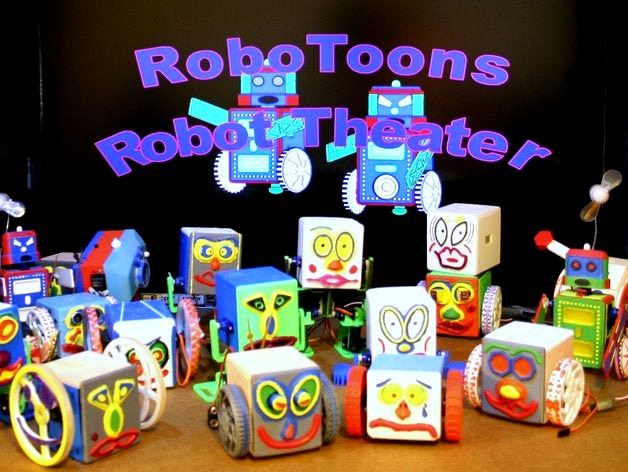Thingiverse

miniFloppyBot Face05 Wheels02 by SolidWorksMagi
by Thingiverse
Last crawled date: 4 years, 8 months ago
The miniFloppyBot is the starter projects for the "RoboGuts™ S.T.E.A.M. education program where teachers only help students find answers and solve problems" as the students learn the manufacturing process.
The kit's I've been designing for elementary and middle school classrooms. The students begin their lessons by having the class 3D printer begin printing miniFloppyBot bodies, tops, wheels and faces.
Then students start learning with the RoboGuts™ circuit board some basic electronics. Learning about polarity, basic color codes and a few types of components.
The student learns how to add a micro controller chip (MCU) and different devices, LEDs, peripherals and motors one at a time making the appropriate jumpers on the RoboGuts™ circuit board adding jumper wires to complete the circuit design by following the example wiring diagrams on the website (http://www.r2pv1.com/PICAXE28X2m/), then after clicking on the jumper wire diagram the student enters the programming mode.
In programming mode the BASIC language program listing for the current lesson is displayed ready to be copy/pasted into the chip being used programming editor. The student then programs the chip/module to run the lesson demo.
Now the student can begin experimenting by altering the programming code to help them better learn and understand structured programming and how the code works.
Finally after working on the beginner lessons and listening the the 3D printer printing out the kit parts for the class, the user is ready to tackle end projects ... this is where the miniFloppyBots and BillyBot robot kits become fun talking 'n singing (in any language) toys the children have actually made themselves!
That's the goal of this S.T.E.A.M. education program, to learn the entire manufacturing process starting with the most simple steps then experimenting and expanding to more advanced lessons simply because of the incentive to explore their own creativity.
I can only hope the schools will begin to give pre-schools professional 3D CAD/Modeling software to learn how to draw and color and begin to build their 3D modeling and math skills.
The kit's I've been designing for elementary and middle school classrooms. The students begin their lessons by having the class 3D printer begin printing miniFloppyBot bodies, tops, wheels and faces.
Then students start learning with the RoboGuts™ circuit board some basic electronics. Learning about polarity, basic color codes and a few types of components.
The student learns how to add a micro controller chip (MCU) and different devices, LEDs, peripherals and motors one at a time making the appropriate jumpers on the RoboGuts™ circuit board adding jumper wires to complete the circuit design by following the example wiring diagrams on the website (http://www.r2pv1.com/PICAXE28X2m/), then after clicking on the jumper wire diagram the student enters the programming mode.
In programming mode the BASIC language program listing for the current lesson is displayed ready to be copy/pasted into the chip being used programming editor. The student then programs the chip/module to run the lesson demo.
Now the student can begin experimenting by altering the programming code to help them better learn and understand structured programming and how the code works.
Finally after working on the beginner lessons and listening the the 3D printer printing out the kit parts for the class, the user is ready to tackle end projects ... this is where the miniFloppyBots and BillyBot robot kits become fun talking 'n singing (in any language) toys the children have actually made themselves!
That's the goal of this S.T.E.A.M. education program, to learn the entire manufacturing process starting with the most simple steps then experimenting and expanding to more advanced lessons simply because of the incentive to explore their own creativity.
I can only hope the schools will begin to give pre-schools professional 3D CAD/Modeling software to learn how to draw and color and begin to build their 3D modeling and math skills.
